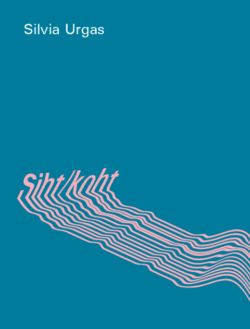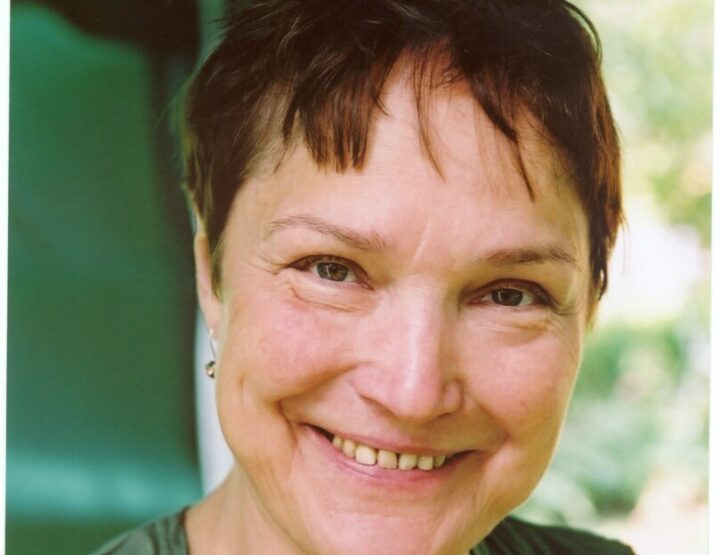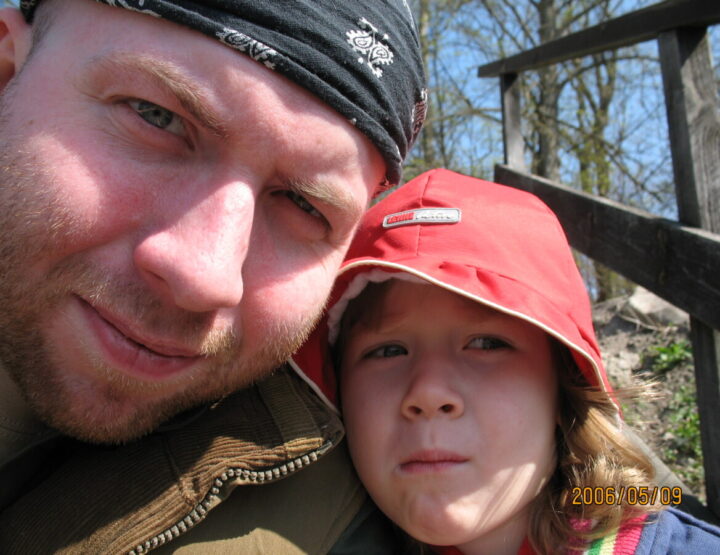Hasso Krull is a winter poet. I’m not saying this merely out of opportunism – his latest and much acclaimed collection of poetry (2006) was titled Winter. As Hasso’s contemporary, indeed almost the same age, I also remember his first. That was called winter too. Although not literally, and it wasn’t even Hasso Krull’s book. The author was Max Harnoon, a portrait of Hasso as a very young man (in 1986) and the title was Black-white. Which is more or less the same. Black-white, winter.
It is fascinating to draw a line of tension between a poet’s first and last (so far) collections of poetry. The first book already contains everything, and the latest shows what has become of all that. Talking about winter, which in the northern parts up here is inevitably also black-white (if there is no snow, then just black), I am not just juggling with words. There is something much more here: the main tone. And it is wintery. Maybe I would not remember or be so certain, but as it happens I wrote a review of that first book, in the form of a poem, because it inspired me. In 1986, the book was something truly new, truly contemporary. In that poetic review, as I recall, winter dominated. Just like at the end of the book by that young man Max Harnoon (Hasso never used this, or any other pseudonym, again). The next to the last poem, White and pure world, white and pure, has the lines:
only thee, winter,
can bridge all that exists
What intimacy: thee, winter! And the idea that winter is something that joins rather than separating, is a refuge and not an enemy. Although the poem contains references to death (Lethe and Styx), as indeed does the whole book, a very young poet always talks about death. At 42, Hasso Krull no longer mentions death in his Winter, at least not quite so directly. 42-year-old Hasso is naturally more vital, less symbolic and airy than 22-year-old Max. And much more social, although this word has become rather pointless and even repulsive from its overuse in poetry. The so-called ‘social’ poetry is often nothing but a weird neo-Stalinism, flat newspaperish ‘social criticism’, for some reason liked by some festivals, critics and naturally the press – in a word, it is just a banal ‘bazaar joke’ and not poetry in the lofty sense of the word, which was still taken for granted in Estonia in 1986. The inner seriousness (without however being overtly serious, as there is plenty of quiet humour in it) of Hasso’s poetry might partly be a historical legacy of Estonian resistance culture, where we grew up and where poetry was, incidentally, always social, i.e. political, even the ‘purest’ nature poetry, and perhaps that especially…
Hasso’s sociality is, therefore, something totally different from bazaar-sociality. This is not merely cheap opposition, being anti-something (since abolishing censorship, simply being anti does not really cost a penny; you actually get paid for it), but being different. Here we come upon a cliché of modern poetry discourse, as ‘being different’ is one of its obsessions; unfortunately quite often this designates nothing more than superficial peculiarity that means nothing. Hasso’s poetry has been different from the start, not because it aspired to be different, but because it has meant something. And if it has meant something then it is social. Meaning can only be social
Poetry’s social meaning could seem marginal ‘today’ (who, after all, read Baudelaire in his time?), although it could just as well be an optical illusion. Compared with the massive scale of the press, for instance, it is indeed marginal. However, all that massiveness is, in fact, nothing but repetitive mass. Everything that is able to carry meaning against the background of that and other social noise, indeed means something. Although it is not immediately obvious.
Hasso Krull is not quite free of journalistic sins either. Even he has occasionally felt the need to explain ‘his idea’ via that medium. To express his own political programme, as it were. If an anarchist can have a programme, that is. Besides being perhaps the clearest and purest winter poet in Estonia, Hasso might easily be the clearest and purest anarchist in Estonia as well. The more so that he does not at all correspond to the image of an anarchist. I have never seen him dressed in black. He does not belong to any anarchist association or anything like that. He is far too anarchistic for that. Like everyone who is something seriously and not just to seem interesting, he looks like a perfectly ordinary human being. Fernando Pessoa has a remarkable character, a banker-anarchist. He is simultaneously a banker like other bankers, and more of an anarchist than other anarchists. Hasso Krull could be called an anarchist of the suburbs, of a district of ‘private residential houses’, as it was known in his younger days. An anarchist-conservative. His life and poetry will perhaps always be connected with the quiet and green Tallinn suburb called Nõmme, resembling the bourgeois idyll of the thirties. By the way, the poet has never moved in his life. He is an anarchist who despises changes. At least external ones. He seems quite an extreme conservative. However, isn’t a truly extreme conservative really an anarchist in today’s society, where the dominant trend (here in Estonia it is more so than elsewhere) is to keep repeating the mantra: progress, change, reform? Better, more, original. To stay the same amidst all this, at the same place, always outdated, means going against the current, even if the seemingly turbulent current is nothing but stagnant water. It still offers some resistance.
Thus – winter, suburbs, conservatism, anarchism. Silence. Silence, of course, requires an immensely greater effort than noise. How to remain silent in the middle of noise, in peace in the midst of war? The war is raging all around, isn’t it? Even if our civilisation does not seem to fight for anything quite so devoutly as for peace. War of consumption, war of progress, simply war. Finally the war in which we are all unavoidably involved, either the poets of Tallinn suburbs or American Indians of the Amazon primeval forests – the angry war that has lasted for over two hundred years, war against the past, nature, conservatism, the old ways of previous generations. This war naturally has no sides or winners, because there is no us and there is no nature; the war rages inside us, and the outcome is just a release of some forces, violating an ancient and nameless (anarchist!) order, which is expressed in people’s spiritual confusion and finally in the confusion of the weather, the climate, the elements of heaven and earth. These elements are in fact struggling to establish the peace and balance that we, in our rational desire for order and our wish to do better, have ruined. Even winter is no longer winter. And if winter were something, we could say that the storms and floods and wars are nothing but winter’s attempt to become winter again, achieve peace. I would here like to quote a poem in Hasso Krull’s Winter book:
No snow. In January
the colours of a Japanese screen,
with a pine tree, grass and flowers. Monoyama
period.
The period was short, a bit
over forty years, but at that very time
today’s Japan was reputedly born. There was
war in Estonia, early Swedish time began,
where did the snow get to? I know,
it went underground. There are pine
roots, grass roots, roots of
earthquakes and tsunamis.
The war however is above ground.
Among us all, strange that it does not
want to leave.
In fact I am not certain whether it is a separate poem or an excerpt from a longer poem (although the word ‘poem’ sounds a bit funny here) titled Winter. Because the book can be read just like that, in sequence, as, say, someone’s winter diary. Without a visible narrative axis, that is true, if it is not the simple process of life in winter. Still, can there be any kind of narrative axis in winter? Winter is a state and not a happening. It just is. And then it passes. Snow returns to the ground. In order to emerge again. And yet this winter poem contains an unintentional epic dimension. Hasso has been saying for a long time that he would like to write an epic. Well, who wouldn’t? He probably did not have in mind an epic in the 19th century romantic, folklorist and historicist spirit, as they were made at that time, including the Estonian Kalevipoeg (Kalev’s Son). Hasso meant a real epic, a basic song, which would come from nowhere and reach everywhere. That ideal epic would probably not be national either, nor of course simply syncretistic, but instead pre- (or post-) national, human, without pretending to be universal. He has made conscious attempts in that direction, dealt a lot with myths and very old heritage (both Estonian and world), tried to blend them into one new and vital (or restoring) myth, but these conscious attempts have perhaps remained a bit too conscious. Still, examining this topic has not been in vain. Pondering myths, the past and our mental and material origin has eventually borne fruit. In Winter, Hasso has fully integrated his mythological material into his poetry. It is no longer quite so obvious, but more effective. Dialogue with the forces of the land, ‘dark’ chtonic forces in ourselves and underneath us have finally become natural.
Hasso has always been fiercely against any monotheism, and his search in the field of mythology, intellectual heritage, has taken him further into the past, into a pre-monotheism era, or to places where so-called monotheism is or was not known. So-called because everything is much more refined than it might initially seem and Hasso Krull’s poetry is one proof of that complexity. Apparently, the most serious and sincere monotheist can only be an anti-monotheist. Hasso is probably the most monotheistic person I know. True, his sole god lives in faraway places at various times under many names, but here and now it can as well be called Winter. Winter, who (not which!) paves ‘all that exists’, as a very young poet wrote, although a forty-year-old poet already knows that amidst ‘all that exists’ a war is raging. On the other hand, this could also be a purifying, healing knowledge: war lies in peace, and peace in war. Nature is in man, and man is nothing as well. Especially in winter, by the way.
The inside cover of Winter has a picture by photographer Peeter Laurits, Hasso’s friend, who runs a sort of artists’ retreat far from town, in the middle of a forest. The picture shows two tiny naked pink human figures against the background of a huge black-and-white snow-covered stack of firewood, black veils on their eyes, recalling something frivolous and at the same time serious, for instance the Marquis de Sade, whom Hasso perused at some point. He has perused a lot of authors; that’s for sure! Our passionate winter poet, an anarchist suburban conservative, has his social, educational programme, part of which in recent years includes publishing the virtual translated poetry magazine Ninniku (in Japanese it reputedly means garlic, a vegetable certainly associated with winter!) and coaching young poetry translators. Every person, after all, has several faces and wears several hats, and each life simultaneously runs in different directions. I have focused merely on one abstract but visible line between Hasso Krull’s first and latest poetry books. This has led from winter to winter, but each time going deeper, into the earth, to the roots, to a place where snow goes, in order to be born again in the sky every winter, like an upside-down flower.
© ELM no 25, autumn 2007





